The 4 Best Battery Powered Guitar Amp Choices for 2023
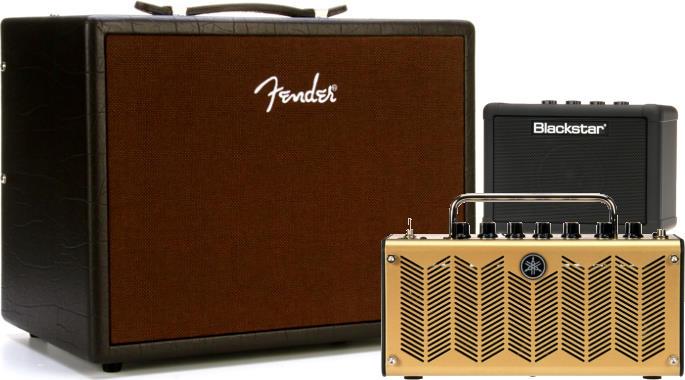
The Highest Rated Battery Powered Guitar Amps
Blackstar Fly 3 Bluetooth - 3W
Cons
- Limited volume
- Lackluster clean tone
- No USB connection
Pros
- Superb portability and great for practice
- Great sounding overdriven tones
- Bluetooth convenience
- Versatile voicing via Blackstar's ISF knob
The Blackstar Fly 3 Bluetooth is a compact amp that addresses the most common need of guitarists - the ability to practice anywhere and do so at manageable volume levels.
Rated at 3W, this is not a loud amp, but it does what big amps can - it provides great-sounding tone at lower volumes. And it does this with Blackstar's patented Infinite Shape Feature (IFS), which gives the amp versatile voicing with just one knob - from tight American tones to jangly and open British voicings.
For a small amp, it sounds bigger than it actually is, and has good definition, even when you set the gain high. As long as you don't drive the volume too much, you can get great sounding overdriven guitar tones. Clean tone is not as good though, but you don't really get amps from Blackstar to play clean. Read here for a good explanation on what is gain on an amp.
It has a 3W battery powered amplifier paired with a 3" speaker housed in a modern looking cabinet. It can be powered by 6 AA batteries for untethered use, and it can also be powered by AC power via an optional power supply.
Being a more recent release, this version comes with wireless Bluetooth compatibility, so playing along with tracks is easier. This feature also allows the amp to double as a multimedia player for smart devices. This makes it a great amp to carry on the road and great for playing in hotels and apartments where you want good tone but don't want to disturb the neighbors. This small battery powered amp also has a headphone jack for quiet practice.
With its practicality and portability, the Blackstar Fly 3 Bluetooth is highly recommended for guitarists who want to keep practicing wherever they go.
Specifications
- Power Rating: 3-Watts
- Battery Life: Up to 20 Hours
- Power Source(s): 6 x AA Batteries or 6.5V DC
- Speaker: 1 x 3”
- Controls: Gain, Volume, EQ (ISF), Delay, Bluetooth, OD, Delay Level, Power
- Input(s): 1/4”, AUX-IN
- Output(s): 1/8" Headphones, RJ45 jack (Extension Speaker)
- Weight: 1.98 lbs
- Dimensions: 4.96” x 6.69” x 4.01”
| Website | Source | *Rating Value |
| YouTube | Perfecto De Castro | 96/100 |
| Guitar.com | Chris Vinnicombe | 90/100 |
Demo
Yamaha THR5 - 10W
Cons
- Limited volume
- Does not move air like traditional amps
- Need software editor to access some features
Pros
- Versatile amp modeling and effects
- Crisp and detailed tones
- Intuitive controls
- Vintage radio aesthetics
- USB audio interface and preset editing
- Good battery life for what it can do
The THR5 is part of Yamaha's line of desktop-friendly combo amplifiers meant for practice and home recording. Its rectangular profile is inspired by vintage radios, giving it a classic appeal. But its old school look contrasts its internals, which provides modern digital sound processing.
Speaking of DSP, this compact amp lets you choose from 5 amp models that cover a wide spectrum of tones: Clean, Crunch, Lead, Brit Hi, and Modern. It may seem few compared to modern amp modelers, but it trumps the competition when it comes to tone and sound quality.
The tones that it provides are crisp and detailed, more akin to how a guitar sounds on recorded music than an actual amp. It sounds great when using clean and crunch settings. And it also has decent mid-gain to high gain tones, as long as you're careful to not push the amp's volume too hard. Also don't expect this small amp to move air like a traditional amp.
In addition to its amp models, it also comes with 4 types of modulation effects, along with 4 delay/reverb effects. All of that add up to make the THR5 versatile enough to cover much of what's being used in different styles of music. What's impressive though, is that given its versatility, it still is intuitive - it doesn't take much tweaking to get good sounds. It has a tone control knob for basic EQ adjustments.
Note that features are a bit limited compared to bigger THR models, but this is expected given that this is the smallest and cheapest of the bunch.
The amp is driving two 3.15 inch speakers and can do so for up to 6 hours while running on eight AA batteries - which is quite impressive given the many tones and uses that you can get from this guitar amplifier. You can also play silently by plugging your favorite cans into the headphone output.
The Yamaha THR5 is a fun amp to take anywhere, be it at home or outdoors. If you're looking for a compact and affordable grab-and-go amp, then this is highly recommended.
Specifications
- Power Rating: 10W
- Battery Life: ~6 hours
- Power Source(s): AC Adapter / 8 x AA Batteries
- Speaker: 2 x 3.15"
- Controls: Amp, Gain, Master, Tone, Effect, DLY/REV, Volume, Tap Tempo
- Input(s): 1 x 1/4" Guitar Input, 1 x 1/8" Aux in
- Output(s): 1 x 1/4" Headphones
- Weight: 4.4 lbs.
- Dimensions: 6.57" x 10.67" x 4.72"
| Website | Source | *Rating Value |
| YouTube | Elmo Karjalainen | 68/100 |
| YouTube | John Coupland | 94/100 |
| Guitarist Next Door | Teemu Suomala | 80/100 |
Demo
Yamaha THR5A Acoustic Amp - 10W
Cons
- Limited volume
- Single channel
- Need software editor to access certain features
Pros
- Adds back the air and body resonance of acoustic guitars
- Versatile voicing options via Mic models
- Useful effect selection
- Studio quality sound and functionality
- Good battery life for what it can do
Yamaha's THR line takes another top spot in the market, this time with a compact battery-powered amp that's meant for acoustic-electric guitars, the THR5A.
Being an acoustic amp, its main focus is to improve the sound and realism of under-saddle piezo pickup systems. And it does this by emulating the sound of a miked-up instrument, using modern digital sound processing algorithms. This adds back the natural air and resonance of the acoustic guitar body, which can then be blended into the direct piezo output.
Since this is meant for acoustic instruments, it does away with overdrive and amp models and opts instead for different mic models. The models include emulations of popular mic types including condenser, dynamic, and tube. The condenser model is my favorite, as it adds a lot of body to the sound, much like how condenser mics would when using it for recording. The dynamic mic model is a bit more subtle, while the tube model adds a bit more old-school warmth and grit to the sound. There is also a special mic model tweaked for acoustic-electric nylon string guitars, and an EG CLN (Electric Guitar Clean) mode where the blend knob behaves like a gain knob.
In addition to these tone-enhancing mic emulations, the amp also comes with useful effects like compressor, chorus, flanger, tremolo, delay, reverb, and noise gate. Note that some of these effects are only accessible via the software editor.
All of these features are packed inside a compact amp that looks like a vintage radio, which gives it an aesthetic edge over the usual look of compact amps. Speaking of compact, at 10W and with two 3" speakers, this is meant for small rooms and studio use. It does not have enough volume for band settings, let alone gigs.
The Yamaha THR5A can run on 8 x AA batteries for 6 to 7 hours, so it is truly a "play anywhere" acoustic amp. Interestingly, the label "amp" doesn't really do it justice, the more proper description for the Yamaha THR5A is that it's a portable all-in-one studio rig for acoustic-electric guitars. Definitely worth a closer look if you're into acoustic-electric guitars.
Specifications
- Power Rating: 10-Watts
- Battery Life: 6-7 Hours
- Power Source(s): 8 x AA Batteries or DC
- Speaker: 2 x 3”
- Controls: Mic Type, Blend/Gain, Master, Tone, Effect, Delay/Reverb, Volume, Tap Tempo/Tuner
- Input(s): ¼”, AUX-IN, USB
- Output(s): Headphones
- Weight: 4.4 lbs
- Dimensions: 10.7” x 6.5” x 4.7”
| Website | Source | *Rating Value |
| Acoustic Guitar Magazine | Doug Young | 88/100 |
| MusicRadar | Dave Burrluck | 90/100 |
Demo
Best Busking Amp
To be considered for this section, amps had to have at least 20 watts of output and have separate inputs for guitar and a microphone that can be used simultaneously. The amp we have recommended is the highest-rated in this category although the Fishman Loudbox Mini Charge was a close runner-up.
Fender Acoustic Junior Go - 100W
Cons
- No acoustic body resonance modeling
- Will need a separate footswitch for handsfree use
Pros
- Loud yet lightweight and portable
- Versatile input/output options
- Clear and transparent sound
- Busking-friendly battery operation
At 100W, the Fender Acoustic Junior Go is a battery powered acoustic amp that can go loud enough for busking and gigging. It comes with a full-range speaker system that includes an 8" woofer and a compression tweeter, so it can be likened to a portable PA system, but with some extra features that guitarists like. More importantly, all these features are powered by a built-in Lithium-ion Rechargeable battery, that can run for up to 5 hours at high volume levels. It can even run for up to 12 hours when set to moderate volume levels.
It has two independent channels with dedicated combo XLR inputs and controls, allowing for two acoustic guitars, or for plugging in a mic and acoustic guitar together. And since both channels have their own EQ controls, you have more freedom to shape the sound without negatively impacting the other sound source.
Speaking of sound, the amp has a very balanced sound, with good highs and deep bass, which is quite surprising given its small woofer. Sans its built-in effects, there's not much coloration going on, so you get an amplified transparent version of what you put into the amp. This clarity is actually the main advantage that this amp has over other similar gigging amps.
Onboard effects include different types and combinations of reverb, delay, and modulation effects. It also has a built-in looper which is nice for looping. It would have been nicer if it had some sort of acoustic body resonance modeling. Note that you'll need to get a separate footswitch to use the looper hands-free.
Another feature that makes this a good gigging amp is its versatile output options - having two XLR line-out jacks that can be set to stereo overall, or as dedicated outputs for each channel. It also has USB audio recording capabilities, which can be nifty when you want to record your busking or gig audio.
I've noticed that recently released Fender amps are getting lighter - without compromising build quality and reliability. This amp is a good example, everything about it feels solid, yet it is light enough to carry with one hand.
All in all, the Fender Acoustic Junior Go - 100W is a good sounding and road-worthy busking amp for those who need to play in places with no power outlet to plug into.
Specifications
- Power Rating: 100-Watts
- Battery Life: 5-12 Hours
- Power Source(s): Built-in Lithium Ion Battery or AC
- Speaker: 1 x 8” with compression tweeter
- Controls: Main Controls( Power, Looper (Record Play/Stop, Undo), Bluetooth Pair), Per Channel Controls (Volume, 3-Band EQ, FX Level, FX Select, Phase)
- Input(s): 2 x XLR-1/4" combo inputs, 1 x 1/8" Aux In
- Output(s): 2 x XLR (line out), 1 x Headphones
- Weight: 15.7 lbs
- Dimensions: 12.02” x 15.71” x 9.4”
| Website | Source | *Rating Value |
| Guitar Player | Jimmy Leslie | 90/100 |
Demo
Things to Consider When Buying a Battery Powered Guitar Amp
-
As features and power rating increase (power rating is the wattage of the amplifier) battery life is going to decrease. So those with complex amp models and effects are going to have a shorter battery life. Also, the louder the amp, the less time the battery is going to last. However, this also depends on the type and amount of batteries used. Bear in mind that more or larger batteries make the amp heavier, making it less convenient to travel with. Some manufacturers also specify that pushing the amp to max volume will greatly reduce operating time. While many amps still run on conventional disposable batteries, there are some that now feature built-in rechargeable batteries. These batteries are expected to last longer, but not forever. The downside to internal batteries is they will are not user serviceable. You'll need proper servicing to get them replaced.
- Speaker size has a huge impact on your tone. The smaller the speaker, the brighter and more focused it sounds. Larger speakers will sound fuller and warmer, while smaller speakers have more mid to treble frequencies. Most battery powered amps have small speakers, but some of them actually have a depth of tone that’s incredibly impressive for their relatively diminutive size. Do take into consideration that larger speaker sizes will impact amplifier weight, especially when approaching the 12" speaker territory.
-
Many battery powered amps now come with built-in amp modeling and effects. But tone selection is generally more limited than larger modeling amps. You can usually only choose one of the modulation effects such as chorus/flanger/tremolo and add some reverb or delay. Apart from simplifying the controls this also helps to reduce power consumption compared to a full-blown effects chain. When your goal is to polish your chops, then having fewer tone options can help you better focus on practice.
- Battery powered amplifiers are usually smaller than regular guitar amps. But the batteries themselves add noticeably to the weight. Generally, louder amps tend to be heavier, so don't expect portable amps to be as loud as bulkier amps. If you're going to play with a band, or in a stage setting, a regular battery powered amp just won't cut it. On the flip side, bringing a loud busking amplifier to a one-on-one guitar lesson can be overkill. You can opt for a smaller and lighter amp that has enough volume for lessons. Another important factor to consider is handling comfort and handle position, especially if you have to carry your amp by hand for longer periods of time.
Battery Life
Speaker Size
Amp Modeling and Effects
Weight/Portability
Budget
As with any purchase, consider your budget when choosing a battery powered guitar amp. Many portable guitar amps are entry-level priced, but there are some more expensive ones made by premium amp brands. More expensive portable amps usually have more power and features. And it's reasonable to expect them to have better build and sound than their cheaper counterparts. Even with portable guitar amps, you get what you pay for.
What to Look for in a Busking Amp
Not all portable amps are meant for street performing or busking. So while portability is important, there are more important factors to consider. First of which is having enough power output to be heard by the passing crowd. This by itself will disqualify many portable amps that are meant for low volume practice. ]In addition to being loud, the amp needs to sound good - good enough for people from all walks of life to appreciate.
The next priority is expanded connectivity options. Having extra channels for a mic or another instrument is a big plus. Being able to play with a track via Aux input is also a feature that many buskers look for.
Battery life is also an important factor, especially if you plan on performing for long periods of time. Thankfully, there are ways to extend battery life. Another time-based factor to consider is durability. You want an amp that you know will work day in and day out.
Battery Powered Guitar Amp Selection Methodology
The first edition was published in 2018. The current edition was published on April 6, 2023.
For this edition we compiled a list of battery powered guitar amps available from major US online retailers and ended up with 35 candidates on our shortlist. We then compiled relevant reviews, ratings, forum discussions, and recommendations for each amp on our shortlist.
The number of sources we collated increased three-fold compared to the previous edition, going to over 38,100. All these data were then processed by the Gearank Algorithm to produce the rating scores out of 100 that we used to select amps that reflect the market's sentiment as the best. For more information about our methods see How Gearank Works.
About the Author and Contributors
Here are the key people and sources involved in this guide's production - click on linked names for information about their music industry backgrounds.
Lead Author & Researcher
Alexander Briones
I have been writing about and researching music gear for many years, all while serving as a music director at my local church. I engage in guitar playing and singer-songwriter stints, in addition to mentoring young musicians and teaching guitar and bass.
Buskers today have it easy with good quality busking amps like the Fender Acoustic Junior Go, I used to have to bring long extension cords if I had to play outdoors! The Roland Micro Cube GX is another great battery powered amp that's more accessible. I'm also jealous of how convenient the Yamaha THR5 is. It packs so much good tone and functionality in a small amp that can run on batteries.
Contributors
Jason Horton: Editing and Illustrating.
Media
Main/Top Image: Produced by Gearank.com using photographs of the Fender Acoustic Junior Go, Blackstar Fly 3 Bluetooth and Yamaha THR5A.
The videos have been embedded in accordance with YouTube's Terms of Service.
The individual product images were sourced from websites, promotional materials or supporting documentation provided by their respective manufacturers.



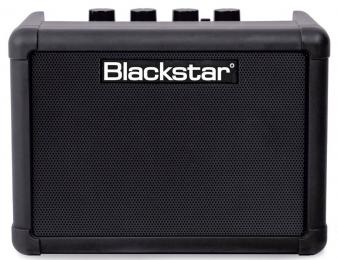
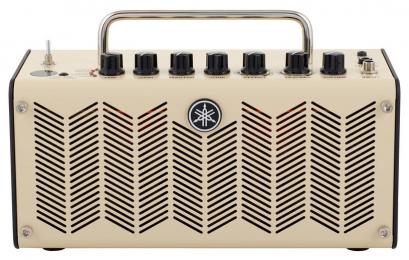
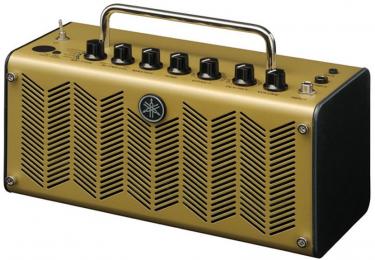
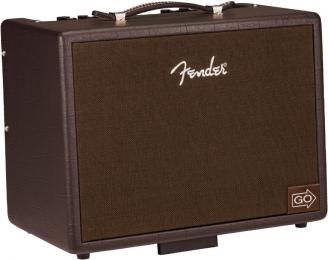
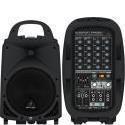
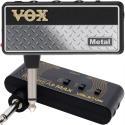
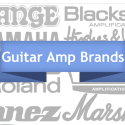 The Best Guitar Amp from the Top 10 Guitar Amp Brands
The Best Guitar Amp from the Top 10 Guitar Amp Brands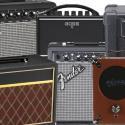
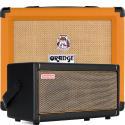
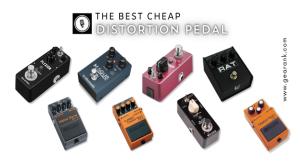
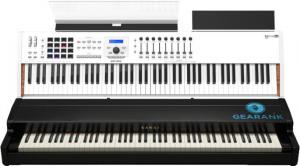
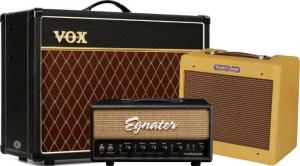
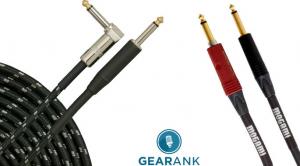
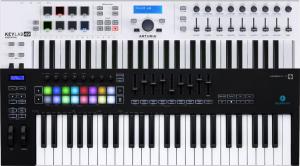
Comments
Publication of our 2022.10
Submitted by Jason Horton on
Publication of our 2022.10 Edition resulted in the following amps being removed from our recommended list due to being out-ranked by the amps above:
We've removed the Roland
Submitted by Jason Horton on
We've removed the Roland Micro Cube GX due to it being discontinued.
I have the bass version of
Submitted by Krimel (not verified) on
I have the bass version of the Fly with external speaker. It is nice but the amp you left off is better. The Nux Mighty Air is smaller, louder has great amp modelong and thousands of effects combos.
Many people do like the Nux
Submitted by Jason Horton on
Many people do like the Nux Mighty Air, however we didn't put it on the recommended list because its ratings weren't high enough.
You can see our ratings for both Nux amps here.
Publication of our June 2021
Submitted by Jason Horton on
Publication of our June 2021 Edition resulted in the following amps coming off the recommended list above, but you can still see our analysis of them:
Curious why more amps aren't
Submitted by Peter (not verified) on
Curious why more amps aren't being made utilizing rechargeable lithium-polymer batteries? These batteries can supply much more power for longer periods then a handful of AA or AAA batteries while also being rechargeable and easily replaceable. Guess most amp makers aren't interested in utilizing a power source that you can find in many power hungry electronics now, from portable speakers to cell phones to drones. Maybe I should start my own company.
yes i agree, i came here to
Submitted by agreeable (not verified) on
yes i agree, i came here to din that it is weird there are not more .. wtf shitty aa batteries lol
We've removed the following
Submitted by Jason Horton on
We've removed the following amps from the recommended list above due to being discontinued, but you can still read our analysis of them:
As a result of our July 2019
Submitted by Jason Horton on
As a result of our July 2019 update the following amp was removed from the recommended list above: Vox Mini5 Rhythm.
How did you miss the Roland
Submitted by Andre (not verified) on
How did you miss the Roland Mobile Cube in this list?
The Roland Mobile Cube is a
Submitted by Jason Horton on
The Roland Mobile Cube is a good amp and we have previously recommended it in our guide to Best Guitar Amps Under $200 - here's a direct link to the Mobile Cube information.
We did consider the Mobile Cube for this guide, but there were many battery powered amps with higher ratings, so we chose to recommend the more highly rated amps instead.
The Roland Mobile Cube is still on our short-list and will be considered for inclusion when we publish our next major revision of this guide.
Why do they all run on AA
Submitted by Anonymous (not verified) on
Why do they all run on AA batteries? I want an amp with serious power that will run on my rechargeable drill battery pack.
Looking for a portable
Submitted by Steve Landsberg (not verified) on
Looking for a portable lithium powered amp for acoustic guitar - preferably with at least a 6" speaker size (one)... likely not made (yet) lol... tx ~ S
For regular battery use, just
Submitted by Grey Luddite (not verified) on
For regular battery use, just invest in the latest generation "eneloop" type rechargeable batteries, like Energizer Universal 8 for $20-25. They run 1900mAH, hold a charge in storage for a long time. Just charge two sets, then you have a spare set along with you. You can run mini-amps off a plug-in as well, but note it usually is NOT charging the internal batteries, so you need a separate charger for them. Still a cheap investment for regular players.
There is an amp that is close
Submitted by Jason Horton on
There is an amp that is close to what you're asking for: Fishman Loudbox Mini Charge (link to Amazon).
The battery is rechargeable and it comes with an A/C adapter, the only thing is that I don't know is if it specifically uses a lithium ion battery.
I've also updated our rating for it which you can see here.
small battery powered amp for
Submitted by cilla Te Ua Wiri (not verified) on
Small battery powered amp for 3hr street performance with 3 microphone inputs & costs
I haven't seen any battery
Submitted by Jason Horton on
I haven't seen any battery powered amps with 3 mic inputs.
You would need to either get a battery powered mixer in addition to an amp, or a battery powered PA.